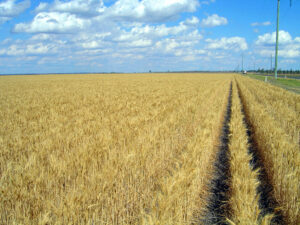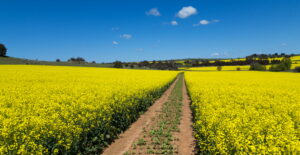If you are on Twitter you will have seen many a post declaring the end of the extended harvest this summer. NSW has basically finished at the same time as southern South Australia and Victoria, which are only a few weeks behind normal. We have seen some post-harvest price movement, but it looks like it’s been caused by left-field international factors.
A fortnight ago we took a look at price movements over the break and said canola had some basis improvement in it. For new readers, the basis is the difference between international canola futures and the local canola price.
For canola, we generally use MATIF (Marché à Terme International de France) Rapeseed Futures, traded in France but representative of European prices, which is where a lot of the Australian non-GM canola ends up. Basis has improved markedly in the last fortnight, but not in the way a canola grower would like to see.
As outlined in Friday’s comment, the announcement that Germany is intending to phase canola oil out of biofuel has seen MATIF Rapeseed Futures take a hit. It is a hit to the demand side of the canola oil equation, while the supply side remains steady. There is a fair bit of water to go under the bridge in terms of weaker demand becoming a reality, but markets will tend to overreact to an announcement like this.
Figure 1 shows MATIF Rapeseed futures in our terms have fallen from a high of $913/t at the start of January to $824/t on Friday. Figure 1 also shows Geelong spot canola falling, but only from $770 to $730. The blue line on the chart shows the marked improvement in Geelong basis to MATIF, now just under a $100 discount.
Basis improvement on a falling market is cold comfort for those holding physical canola without a sold futures or swap position to profit from.
Wheat price movements have been a bit more benign over the last fortnight. With little happening in international markets since the drop in early January, it would seem much of the local price fluctuations are to do with local supply and demand issues. Shipping deadlines tend to play a part at this time of year, but movements haven’t been wild.
Figure 2 shows APW (Australian Premium White) at Geelong basically on par with CME (Chicago Mercantile Exchange) Soft Red Wheat at just under $400/t. This is still pretty good value considering most pundits are forecasting the final crop to come in at close to record levels.
What does it mean?
Canola is cheaper, but now better selling. Those holding will be looking for international market improvement, and there is every chance we will see it with the last week’s fall likely to be an overreaction. At least the announcement from Germany came before sowing, with growers able to adjust plans based on what is likely to be a new supply/demand equation.
Have any questions or comments?
Key Points
- Canola prices have fallen, but the basis has improved markedly.
- Wheat price movements have been relatively benign in the last fortnight.
- Price improvement locally is reliant on stronger international markets.
Click on figure to expand
Click on figure to expand
Data sources: Refinativ, CME, MATIF, Mecardo














